Gerald Hickman's Blog, page 6
November 17, 2011
Water for Wildlife, an essential element
Recently I have been working with a landowner to improve his wildlife health and production on his farm. We are developing plans for fall and spring plantings for food and cover for whitetail deer and non-game species of wildlife.
But as important as food and cover we cannot forget to provide sources of water. In the more arid parts of Washington State and during an occacional drought a dependable source of water is vital for year round occupancy of the animals we wish to protect and provide for on our area.
On this farm we are developing and restoring a wetland that had been filled in by one of the previous owners. We have a good flowing spring and a 200 foot deep well which will give us sufficient water for irrigating plantings, shrubs and trees as well as to fill the wetland as needed.
I am certain that the snowmelt and precipitation will overfill the wetland next spring. However, we may need to supplement the water level from time to time during the drier, warm summer weather.
The aspect of this project which intrigues me the most will be using Solar Panels wired to a water pump in the well. We can run our irrigation and overflow to the wetland with out having power lines to the well site. And the environmental benefits do not stop here, because of many days of full sunlight, in our area, we will be able to store electricity in batteries to sell or use on other habitat projects on this farm.
This ability to pump water in remote sites will be very useful for mule deer, wild turkey and sustaining non-game habitat in isolated spots. We are learning as we go, but I plan to spread the word about
Who was Old Bill Williams?
William Shirley Williams was born in August of 1787 in North Carolina to a devout Christian family of farmers. When he was six years of age, the family moved west to the new frontier in Missouri area. His education came from his mother in reading the Bible and learnin his sums.
When a teenager he heard the call and became a traveling country preacher, calling himself Parson Williams. During his preaching, he met the Osage tribal members who were to become such an influence on his life in the country to the west of the Mississippi River.
He quickly learned the Osage language and became an interpreter for other missionaries, traders and often the U S Army when dealing with the tribe. Bill learned the ways and culture of the Tribe and took an Osage woman to wife. Some say he started to mix his Christianity with the native culture which damaged his reputation with his peers in the religious community.
At some point in time, Bill learned to hunt buffalo and live in the western country from Osage hunting partners and trappers he found in his roamings. He became more reclusive as he pushed deeper into the wilderness, often staying out for weeks alone, living off the land and developing survival skills that few could equal.
In the early 1820’s Bill gave up his preaching as a full time profession and joined a fur trapping party traveling up the Missouri River to the Yellowstone country where he first encountered the Blackfeet nation.
He kept his red hair for many years as he traveled the west trapping beaver pelts and hunting for a living. Since this tall and lanky character came to the west later in his life after years of serving the Lord, his trapping companions tended to be younger than Bill so they called him Ol Bill Williams.
He is credited with exploring the Santa Fe Trail and covered much of the SouthWest in his journies running afoul of various tribes in his travels. Once captured by the Apache in present day Arizona, he was robbed of his knife and weapons, stripped naked and turned loose in the desert. He was saved by another tribe, the Zuni pueblo members rescued Bill and gave him a new outfit after his long walk in the desert.
By 1840 the demand for beaver plets was drying up and Ol Bill started a new career which made him an infamous horse thief. Heading west to Baja Norte California from what was called The Old Bill Williams Ranch at the foothills of The Spring Mountains in present day Nevada; Bill, Pegleg Smith and some friendly Indians would travel over and back across the Mojave desert with stolen horses.
One of his famous trades was at Bent’s fort where he traded a herd of horses for a barrel of whiskey. As the years rolled on Ol Bill got work as a scout for the Army and helped several expeditions with his knowledge of the mountains and rivers of the wilderness west. One of his employers was John C. Fremont on a couple of his explorations as Bill served as a guide with Kit Carson and other Mountain Men.
So to answer the question, who was OL BILL Williams? you could say he was a pioneer, trapper, preacher and Mountain Man who helped explore the American West.
July 10, 2011
Getting started
I have been a wildlife biologist for 40 years, an Interpretive Park Ranger for the National Park Service for 2 field seasons, and I am a student of history, especially in the Western states and my relatives involved in the Revolutionary and Civil War.
I am interested in American History especially the history of my relatives that took part in the Revolutionary War and the War of Northern Aggression. My Grandfather moved west with the railroad in the late part of the 1800’s to Idaho from North Carolina. My great Grandfather was a member of the Confederate Army and near the end of the War was a POW in several locations in the North. My father is a veteran of World War II serving as a mechanic for bombers and two of my uncles were also in the U S Army Air Corps during that War and one uncle was a Navy medic in the South Pacific action of the War. I hope to offer a few blogs about birds and other wildlife on a regular basis.
Hi. I am a retired wildlife biologist who worked with the State Wildlife Agency in Washington State and with three bureaus in the Dept of Interior for the Federal Government. I plan to share some of my family history, wildlife and natural history subjects, family members histories that participated in WWII, the Revolutionary War, War Between the States, agricultural history of the family ranch in North Central Idaho and other things that make an impression on me from time to time. I look forward to answering questions and hopefully stimulating some thoughts and possible discussions on these topics. Thanks for reading my first blog.
Winter Wildlife Habitat
How can humans help wildlife survive the severe weather during the most critical season of the year? With constructive use of vegetation to provide and support winter habitat.
Here are ideas (BMP) for landowners and public lands managers to consider when managing wildlife populations over the most critical time of year, the winter season.
Organize plantings so that they help create winter food sources, hiding and thermal cover.
Examples are: Hawthorn trees and shrubs, crab apple trees,plants that provide vertical structure that lasts the entire winter season and even some food plots near the permanent winter cover mentioned above.
Revolutionary War Veteran
One of my ancestors who served in the Revolutionary War on the Frontier in Virginia and at Fort Boonesborough, Kentucky. A history of Joseph Starnes, his early life, his military service, later life and his war pension per annum.
Joseph Starnes is one of my relations that participated in the fight for freedom in Virginia and other frontier actions. He is my great-great-great grandfather on the paternal side of my family tree. He was born in the Smith River area of Virginia in 1755. He was called into military service while living on the Holstein River near present day Marion, Virginia in Smythe County.
Joesph began his military service in 1777-1778. He served in the Virginia Militia under Captain Aaron Lewis for three months and was stationed on the Clinch River and at Fowler’s Station in Washington County, Virginia. He next served under Captain John Jimison at Harrison’s Station against the Indians of the area. The fort was located on the North Fork of the Holstein River in Washington County.
Joseph next enlisted in Colonel Smith’s Regiment and marched to the relief of Fort Boonesborbough, Kentucky. They arrived just after the fight in which Daniel Boone had driven off the Indians. His next service was in Captain Neal’s company of Colonel William Campbell’s Virginia Regiment. With this regiment he traveled to King’ s Mountain and participated in the battle of October 7, 1780. He was wounded during the battle and was left behind to help take care of the wounded.
In about 1781 or 1782, Joseph served with Colonel Arthur Campbell’s Regiment against the Indians as a mounted volunteer. During this service his father, uncle and brother-in-law were all killed in battle. He joined Colonel Cambell in a punitive raid against the Indians in order “to seek satisfaction” . The raiders burned the Cherokee Towns and Joseph claimed that the raiders”beat them well”.
To summarized his later life, Joseph Starnes moved from Virginia to Mecklenburg County, North Carolina in 1784 and in 1816 he moved to Burke County, North Carolina, that portion which later became Caldwell County.
He applied for and received his Revolutionary War Pension while he was a resident in Burke County. Joseph was awarded $46.66 per annum.
Who was Queho?
Here is the description of a visit to the hideout of an outlaw who was never captured or brought to trial but is accused of murder, robbery and other crimes in an area of the Nevada/Arizona border country as late at 1940.
I have visited Queho’s cave in the isolated, desolate arid county of the Lower Colorado River on the border of Nevada and Arizona. With the extensive research I have done with archeologist in the area and literature research, I find this mystery of this Amerindian very compelling. Just another of the many mysteries waiting to be solved from the Mojave desert.
There is a lot of mystery about the subject of our blog today. Who was Queho? Where did he originate? Was he justly accused of murder? Does he qualify as one of the first serial killers in North America?
Much of the evidence against Queho was revealed when in 1940 a National Park Service Ranger, a local resident and the county sheriff found his mummified body in this rockshelter/cave in the inhospitable canyons south of Boulder City, Nevada and across the Lower Colorado River from Arizona. You may say the mine security badge, rifle, shotgun and many other items in the cave were circumstantial evidence and connections to some of the murders that had occurred in this remote area of Mojave Desert.
The Cave is on the Nevada side of the Lower Colorado River downstream from Willow Beach fourteen miles south of Hoover Dam and Lake Mead. We launched two boats at the beach and headed down with the current, since this part of the Lower Colorado River is almost free-flowing inspite of the dams both up and downstream. In our group were several archeologists, a National Park Service representative and myself. Our first stop was on the Arizona side at CatClaw Cave, a pre-historic site for the various Amerindian cultures that lived in this area. The site at CatClaw Cave was first excavated in the 1940’s and showed artifacts and indications of food habits by the people who stopped here. The evidence showed a dependance on eating native fishes from this part of the river. These fishes included Colorado PikeMinnow, Bonytail Chub and Razorback Suckers all species that are now endangered because of the dams up and down the Colorado River. Our visit was a chance for the archeologists who work for the National Park Service and the Bureau of Reclamation to monitor the condition of the Cave.
Then it was back in the boats and downstream to measure (if we could find it) Queho’s Cave. You have to give Queho credit for hiding out in a very remote canyon and finding a Cave/rockshelter that was hidden to say the least. From the river it was almost a two thousand foot climb to the Cave with few landmarks and no well defind trail. With some searching and a few missed turns along the way and quite a bit of sweat soaking our shirts me did find the Cave. The National Park Service was especially eager to accurately measure the Cave’s dimensions. The opening of the Cave is very well hidden by rock layers and boulders surrounding the entrance. It is easier to see the entrance from surrounding ridges than from the canyons downhill.
There are springs in the canyons and down at the Colorado River of course, but none seem to be close to the Cave. He may have spent time camping near the river or using brush shelters as his ancestors did, especially in the extreme heat of summer along the Lower Colorado River. But he must have used other sites closer to water some of the time. He was strong of lungs and legs to roam as freely in this part of the Mojave Desert but it seems a waste of resources to haul water everyday to the cave site.
All of the equipment and belongs of Queho were removed along with his body many years before our visit. But we were happy to have climbed and sweated our way to the site. This was in early spring and we still required a half gallon of drinking water apiece for our climb. Once the measurements and photos were taken we climbed back down to the boat and headed back to Willow Beach and then to Boulder City, NV were the USBR and NPS people are stationed. In a future blog I will present details of Queho’s life, evidence of the crimes committed in the area and we can see if Queho is one of the first serial killers of the Old West.
Who was Mouse?
There was a mysterious Paiute Indian called Mouse by the white settlers in the Mojave desert of present day Nevada.
An Indian outlaw from Arizona Territory, Mouse could hide out in the isolated, desolate reaches of the Mojave Desert with the only close white settlement at St. Thomas along the Colorado River near the mouth of the Muddy River.
In the area now called Valley of Fire State Park in Nevada, was a hideout for an Indian outlaw known to the whites as Mouse. Within the State Park there is a permanent water source bearing the outlaw’s name -Mouse’s Hole. The area surrounding Mouse’s Hole is vivid red sandstone slot canyons, very difficult to access and easy to use as a hideout if you know how to survive in the Mojave desert. The Mojave is the most arid, water starved area in North America. And conditions in Mouse’s time where similar to the present day.
Actually this story took place when this part of Nevada was still in the Arizona Territory. Las Vegas is about 45 miles to the west of the State Park but was not much of a village at this time, before the railroad arrived and put Las Vegas on the map. This whole area was part of the historic Old Spanish Trail that carried trade and commerce from Santa Fe to Bernadino, California. We will discuss the Old Spanish Trail in a future blog.
To say the least Mouse was a pretty good thief and rustler of livestock. He is accused of murdering folks and general mischief.
Fremont Culture and Their Neighbors to the South
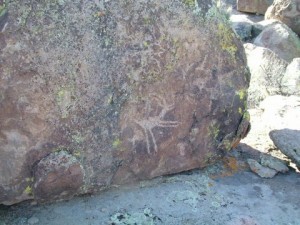 Some of the famous Anasazi Culture found in NV, AZ, Colorado and New Mexico.
Some of the famous Anasazi Culture found in NV, AZ, Colorado and New Mexico.
Many of the features of this society are similar to other tribes in the Southwest however the Fremont Culture has more similarities to other Anasazi groups than other pre-historic populations of the Great Southwest.
Among the tribes that lived along the Grand Canyon, Walnut Creek Canyon and other village sites of Pueblo peoples in the Wupatki area east of and north of present day Flagstaff, AZ, were many with habits and farming and probably religious customs similar to the Fremont Culture in Utah.. These were the farming, hunter gatherers that lived in pueblo style housing in valleys or on mesa tops and then toward the end of the culture, they engineered cliff dwellings for protection from warring neighbors. The Anasazi ruins (abandoned villages) are found in Nevada from the Virgin River to Red Rock Canyon, through Colorado at Mesa Verde to many areas of Arizona and even to the Rio Grande River Valley in New Mexico and Texas. The big mystery is how and why did this culture vanish in abut 1300 BC.
The move from pueblo style housing on the mesas and on top of the Cliffs near the agriculture patches to the defensive Cliff Dwelling often found in later ruins may represent drought created food shortages, religious difference between groups and inter-tribal was among neighbors. There is currently a great deal of research on this issues at several universities and among archaeologists who work for State and Federal Parks in the Southwest Region.
The petroglyphs of the Fremont culture are slightly different than most Anasazi rock art from sites in Arizona and Nevada. The crops raised were: maize (corn), beans, pumpkins and cotton. The villages raised their own turkeys and hunted for deer, bighorn sheep, rabbits and many kinds of small “critters”. The remains of these food items are found during excavations of hunting camps and villages. Cultivated crops were irrigated when sufficient water was available. Village sites were usually located where water and game were easily found. During the last centuries of this culture that had existed in the Southwest for over 1200 years, the ag fields were either above the cliff dwellings or on the valley floor below the protective village site.
Travel to the fields to work the crops and carrying water were certainly inconvenient for the residents and imply to me that it was very important to survival to be living in cliff dwellings on this steep slopes accessible only by ladders or hand and foot holds chiseled into the cliff face.
Research studies lead us to believe that drought, war and other conditions encouraged the Anasazi to move to areas not as impacted by the conditions and to join or create their villages where we find historic and modern day Pueblo peoples living today. Many experts refer to Anasazi cultures as Ancient Puebloans and this term is used widely to help explain about the disappearance of those peoples who lived in the Grand Canyon, Wupatki and even other sites in Arizona, Colorado, New Mexico and Nevada. The upshot is that the Anasazi did not become extinct or disappear but evolved into tribes living in more compatible surroundings.
A Trooper at the Battle of the Little Bighorn
Charles Windolph was an immigrant to the U S from Germany and he joined the 7th Cavalry and was with Lt. Col. (General) George Armstrong Custer at the Battle of the Greasy Grass or Little Bighorn.
An excerpt from my book on the history of the Battle.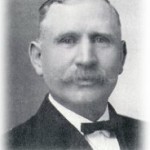
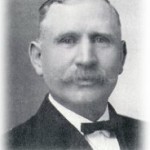
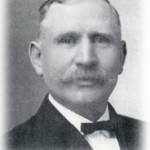
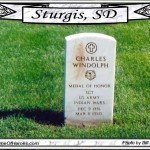
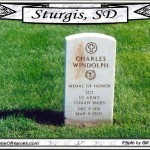
The life of Sargent Windolph is recorded in several pamphlets produced by the National Park Service for the Battlefield National Monument and from the book ghost written for Charlie called “I Fought with Custer” among other reference books and journals. Windolph received the Congressional Medal of Honor for his role in the siege at Reno Hill during the Battle of the Little Bighorn or Battle of the Greasy Grass as it was known to the Indian people who participated in the fight.
Charles Windolph was born in Germany in 1851. He immigrated to the United States of America as a teenager who was afraid of being drafted into the German Army for the Prussian-Franco War. He arrived in New York City broke and speaking only his native language. The country was still in the throws of the depression of 1873 and work was difficult to find especially for an immigrant who did not speak English.Charlie was fortunate to meet another German immigrant who worked in a boot factory. He helped Windolph get a job and to begin his study of English. Charlie’s friend also gave him good advice, to join the U S Army and get a steady paycheck and in the process learn the language. The irony of the advice cannot have been wasted on Windolph but he took the counsel to heart and ended up in the Seventh Cavalry. That is the outfit under the command of Lt. Col. George Armstrong Custer, the boy General of the Civil War and the renowned Western Indian fighter.
Skip forward to 1876 when the U S Army was ordered to round up the “hostile” tribe members and return them to the reservations in the Dakotahs. The campaign to move the off-reservation natives was a three tiered approach but to shorten the story, we will concentrate on Capt Benteen and his troops because this is where Charlie Windolph was assigned for the campaign. Custer split his forces, with Major Reno to attack the south end of the huge village, Benteen was sent to the south edge of the action to prevent the escape of any tribal members who might wish to escape and to scout those hills. Where General Custer and his companies went is the topic of another blog or can be found in my book, A Park Ranger tells the Tales of the Battle of the Little Bighorn.
So back to Charlie who was riding with his favorite officer, Captain Benteen, on what was viewed as a wild goose chase by many. When Benteen headed back to rejoin the command he ran into Major Reno creating a defensive position on some bluffs on the east band of the Little Bighorn or Greasy Grass River. The warriors gradually surrounded the troopers on Reno Hill and the pack train with the supplies and ammunition reached this area of questionable safety soon after Benteen and his men.
Over the next day and one half, Charlie and his companions fought the good fight in hopes of being saved by the Montana and Fort A. Lincoln columns headed to the Little Bighorn. A field hospital was located in the middle of the deployment on Reno Hill and Dr. Porter was short on water for the wounded. A group of volunteers, including Charlie, provided cover fire for the water carriers who braved enemy fire to reach the river and return with as much water as possible in canteens, kettles and other camp pots for the wounded soldiers. This is why Charlie earned the Medal of Honor with the water carriers and the other shooters on the ridge.
The next morning still under fire from the Lakota and Cheyenne warriors, the Indian village packed up and moved away, possibly because scouts reported the migrant arrival of the rest of the U S Army columns under General Terry. The columns brought relief for Sargent Windolph and the remnants of the companies with the pack train, Reno and Benteen. Apparently, the warriors left following the moving village into the Bighorn Mountains to the south of the Little Bighorn.
The upshot of the history for Charlie was that he was given a field commission to Sargenton the battlefield by Benteen, was recommended for the Medal of Honor which he received and lived to be the oldest survivor of the Battle of the Little Bighorn. Charlie continued in the Army until he earned the rank of First Sargent but gave up the military life when his fiance arrived in the U S from Germany. They married and live in South Dakota where Charlie worked as a harness maker for about forty years. Charles Windolph passed away at 98 years onMarch 11th,1950and is buried in a National Cemetery in South Dakota. There will be future blogs concerning aspects of the Western Indian Wars and other characters from the Wild West.
My Great Grandfather was a POW at the end of the War of Northern Aggression
My grandfather headed west soon after the railroad reached Lewiston, Idaho territory. He was a ferry operator on the Clearwater River at Lewiston for a couple years and then became a livery stable owner in Genesee, Idaho territory. After WWI, Granddad got ahold of the land just outside of the new town of Genesee and started farming and raising livestock. The ranch land was about 212 acres of Palouse hilly soil with some basalt rock for making gravel roads. The place had belonged to our relatives the Platt’s and one partner where they raised pure bred livestock and made hay for feed rather than for sale. Uncle John Platt had a huge barn for the pure bred horses and cattle with individual stalls (later I spent alot of time working and playing in that barn as a child). The other barn was for hay storage and milking cows. Hogs were kept in open pens outside the barns. The huge pure bred stock barn had a second story hay storage loft and a pulley/crane system for lifting and dropping the hay efficiently in the loft with a minimum of pitching with a hay fork.
Uncle John Platt headed for the Salmon River country to homestead after they lost the ranch near the end of WWI.



